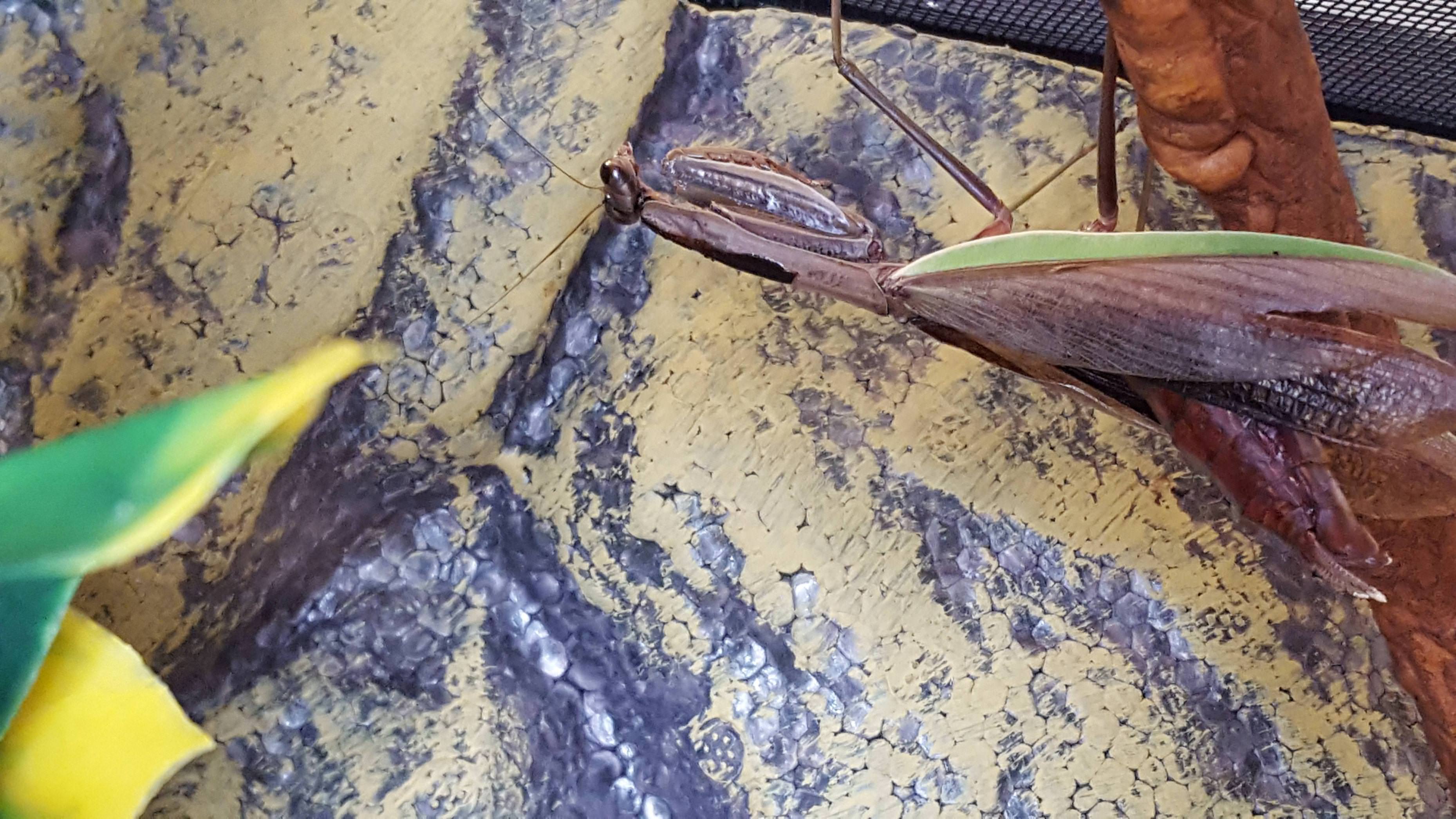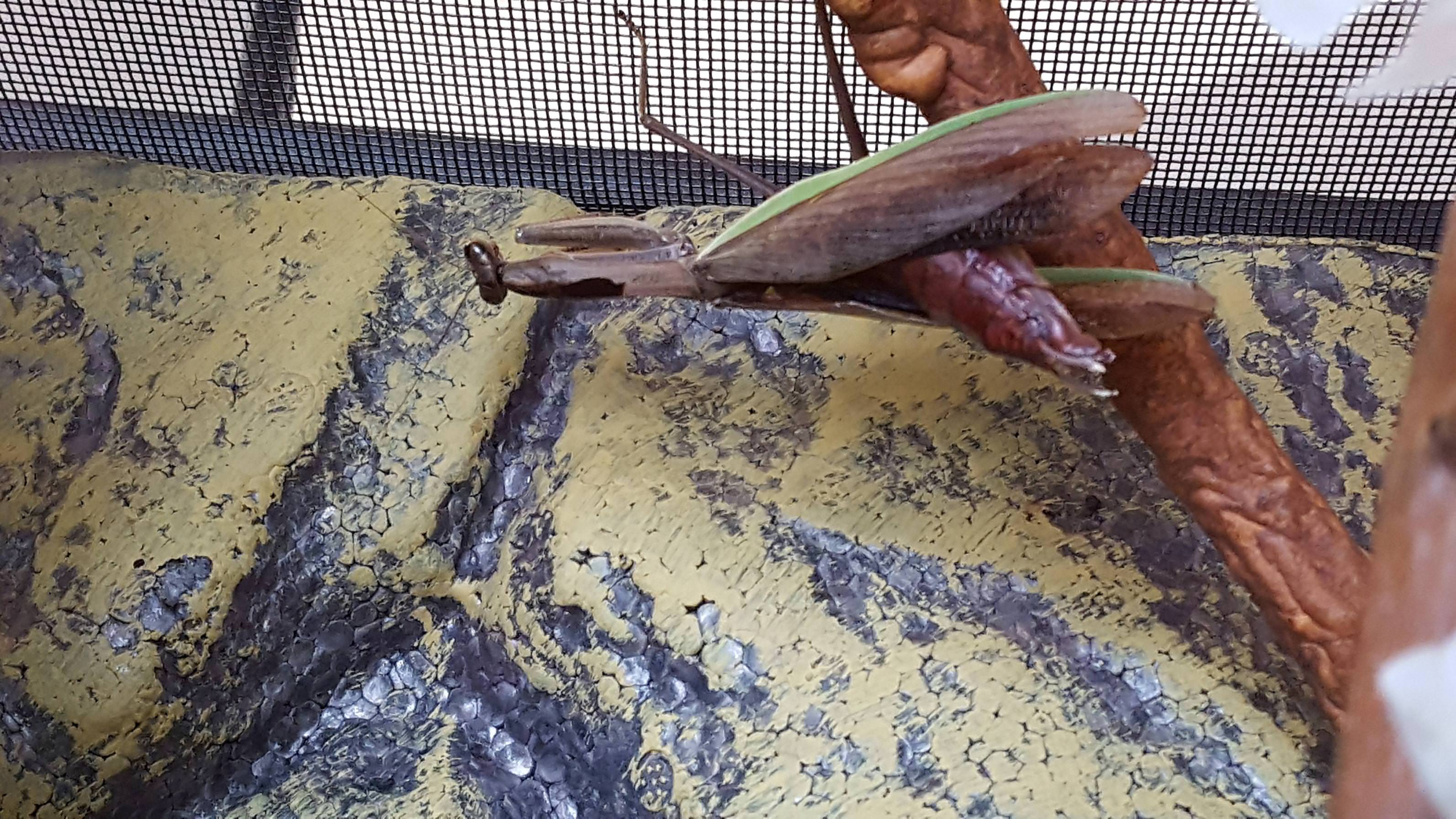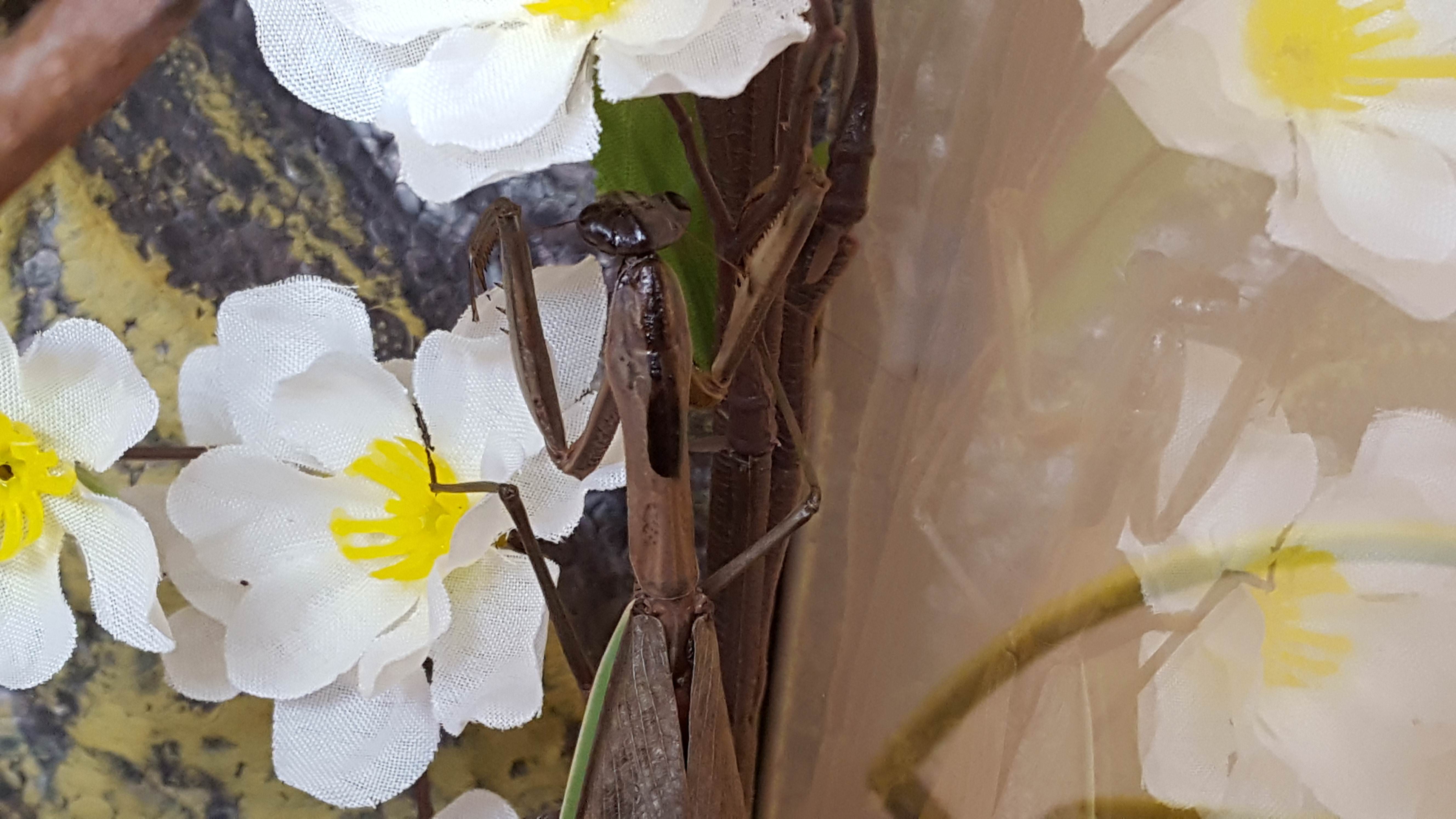Ocelotbren
Well-known member
I have an adult female Chinese that was wild-caught and brought to me in October. I don't know how long they typically live when brought inside for the winter but she's lived longer than I expected.
She hasn't been eating the last few days which seemed unusual because she laid an ooth fairly recently, and today I noticed that she has a black substance on her thorax, on the top side. It seems shiny, like some sort of liquid or gel texture maybe. I haven't pulled her out to look closer yet, but I'm looking for opinions.



The pictures aren't amazing because I didn't open the enclosure due to there being flies in there, but I think you get the idea.
From what I can see, it reminds me of how the black death is described, but in this case it's not vomit. She's been eating blue bottle flies only for probably the last month or so.
Could this be a bacterial infection, or is she on her last legs and her body is starting to decompose or something already? Any thoughts?
Thanks in advance.
She hasn't been eating the last few days which seemed unusual because she laid an ooth fairly recently, and today I noticed that she has a black substance on her thorax, on the top side. It seems shiny, like some sort of liquid or gel texture maybe. I haven't pulled her out to look closer yet, but I'm looking for opinions.



The pictures aren't amazing because I didn't open the enclosure due to there being flies in there, but I think you get the idea.
From what I can see, it reminds me of how the black death is described, but in this case it's not vomit. She's been eating blue bottle flies only for probably the last month or so.
Could this be a bacterial infection, or is she on her last legs and her body is starting to decompose or something already? Any thoughts?
Thanks in advance.












































